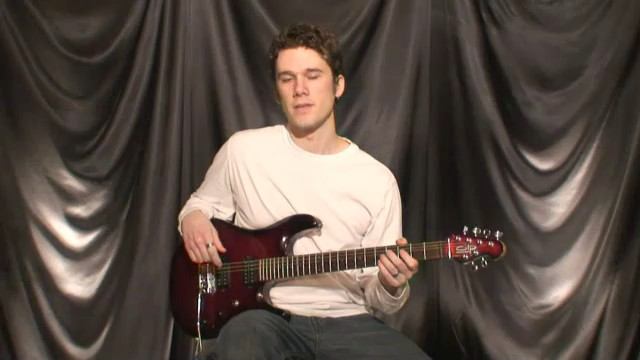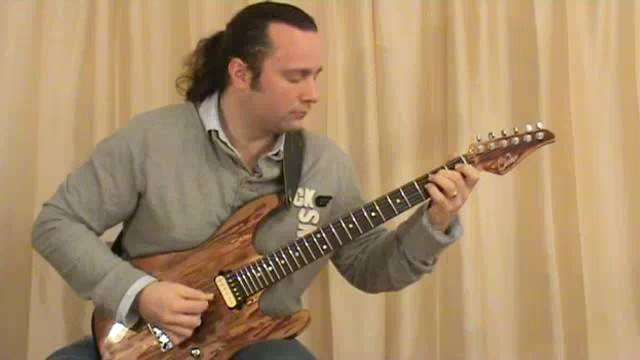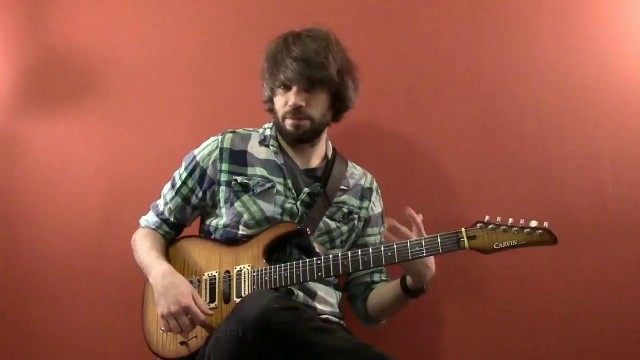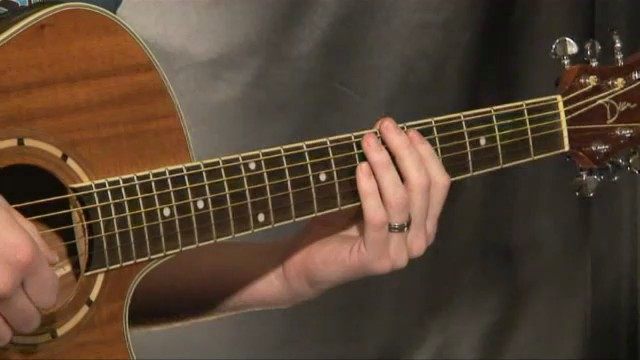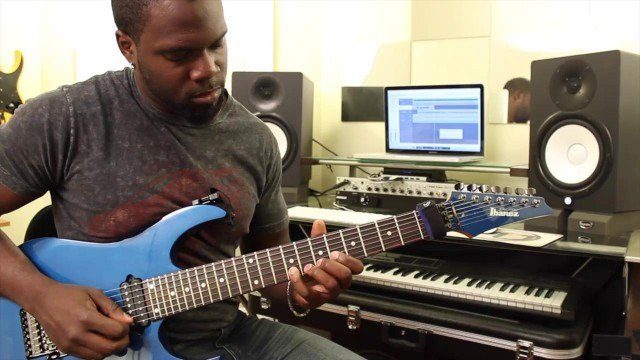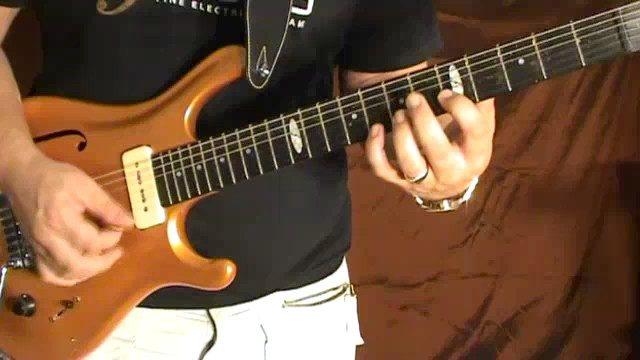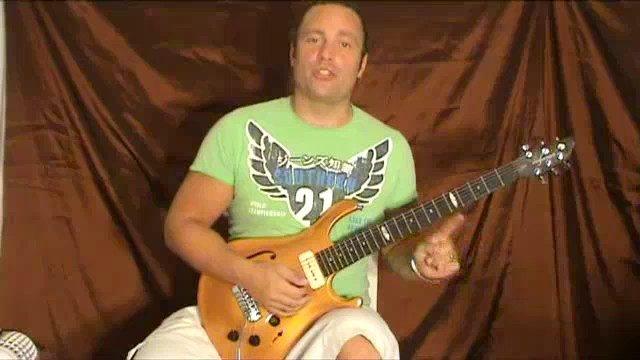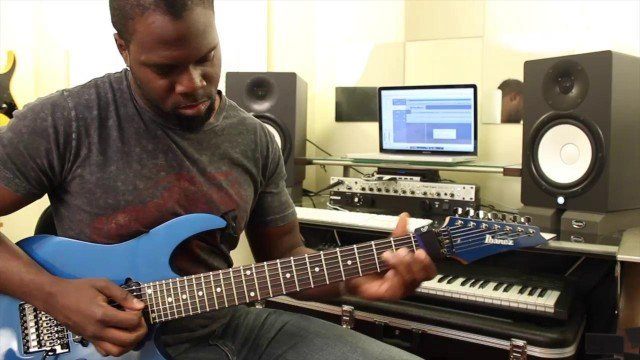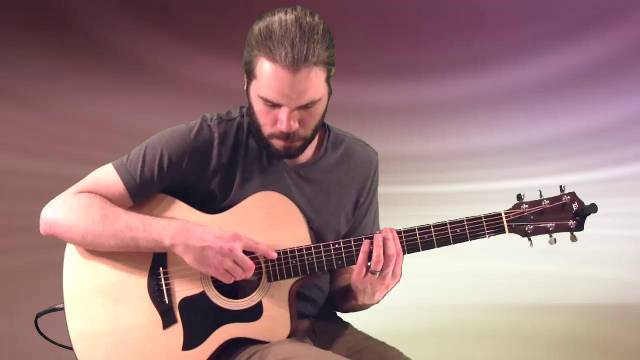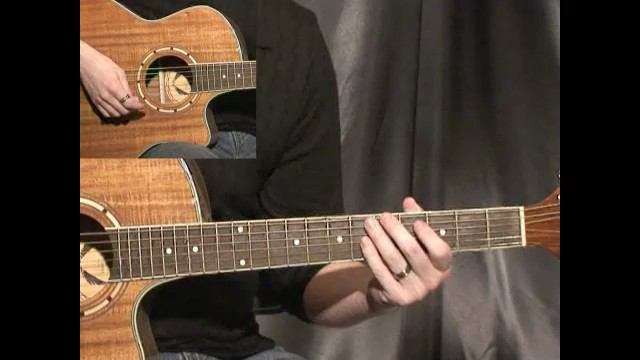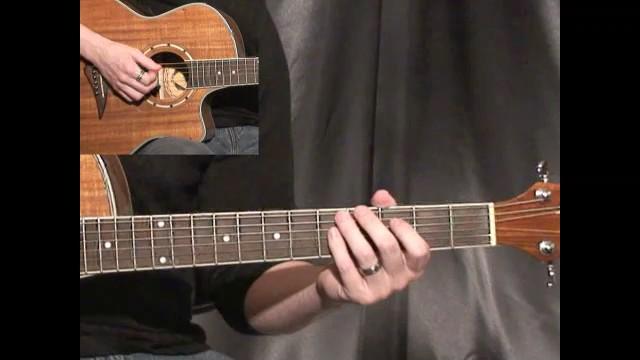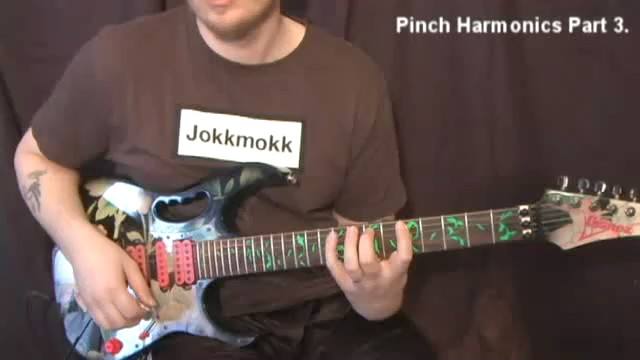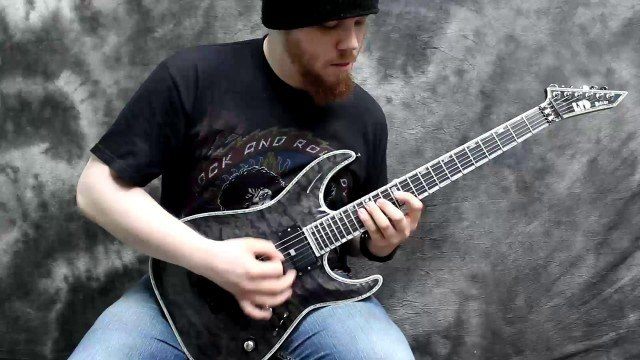Okay then! Time for the cutting edge stuff!
Before we go into this part, I must direct your attention to ALL the transcribed tabs for both the Flick and the Slap harmonic parts. As I have mentioned time and time again, there is currently no way in guitar notation software to notate natural (or other) harmonics correctly.
I have used "A.H." markings here just to give you a rough idea of where on the guitar the harmonics are being created. You MUST refer to the table for exact position and note names! Because, as you can hear, I play the G, B and D harmonics. BUT, because of the shortcomings of the software I cannot note that. Instead, I indicate that I play a harmonic on the 5th, 4th and the 3rd frets. However, you will see that the software cannot note these correctly. It only notes them as the octave of the fretted note. BIG blunder there! So, check the tab for an idea of the actual techniques in question, and a rough idea of where you produce the harmonic, but for the actual notes being played you must refer to the table of natural harmonics.
With that said, this first technique is called “Flick Harmonics”, and was made famous by the late, great, Dimebag Darrell. These techniques are not really worth describing too much in words, since they are so much easier to grasp in the video. To keep it short and sweet, you do a dive-bomb with the whammy bar, and at the same time flick the string upwards with the fingertip of the right hand middle finger. As you begin to release the tremolo-arm back up, reposition your finger, and gently touch the now vibrating string at the harmonic node, thus creating a very smooth harmonic.
Thin string and a smooth tremolo will make these techniques much easier than on my demonstrated JEM guitar.
















